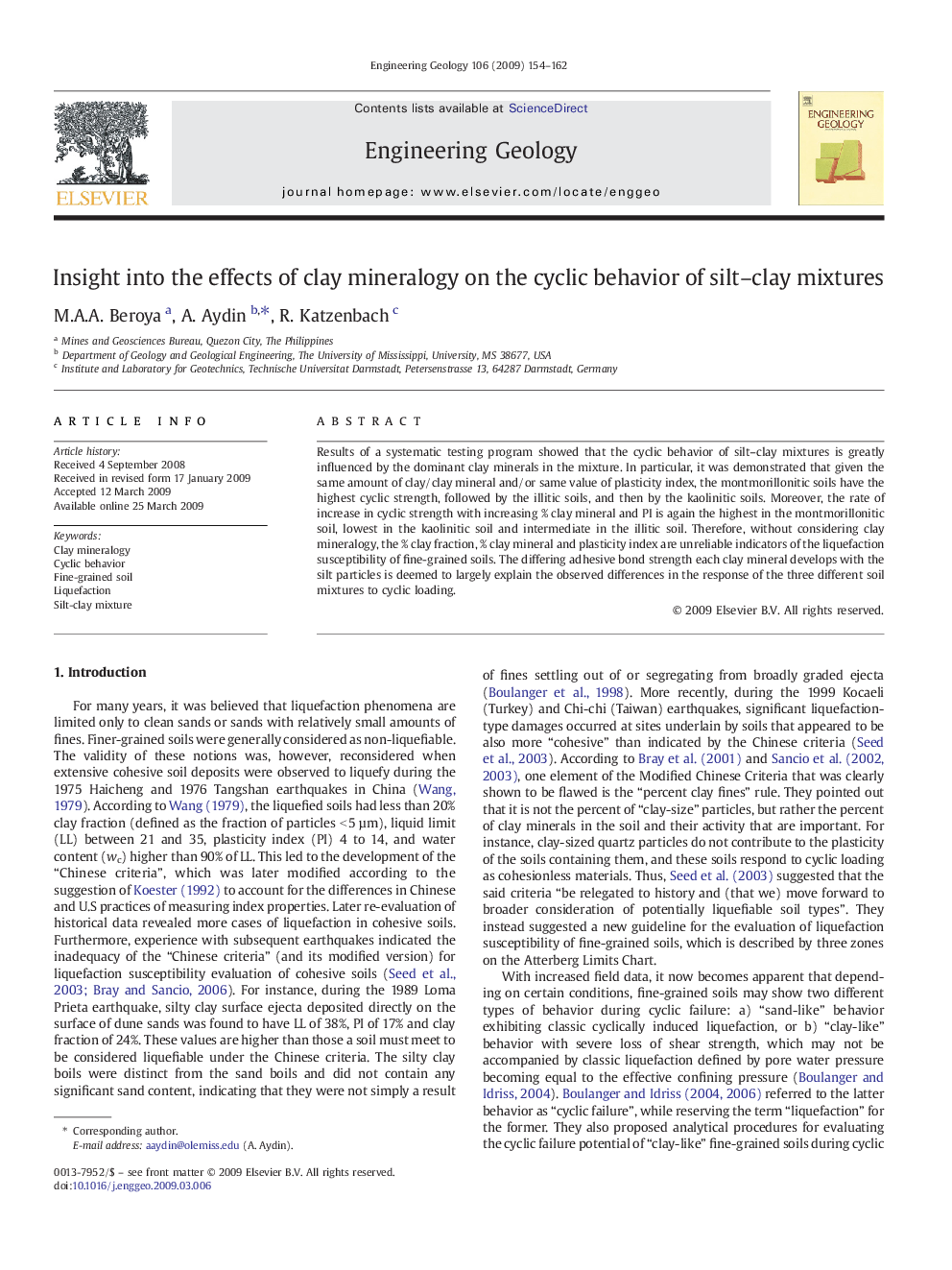| کد مقاله | کد نشریه | سال انتشار | مقاله انگلیسی | نسخه تمام متن |
|---|---|---|---|---|
| 4744599 | 1641878 | 2009 | 9 صفحه PDF | دانلود رایگان |

Results of a systematic testing program showed that the cyclic behavior of silt–clay mixtures is greatly influenced by the dominant clay minerals in the mixture. In particular, it was demonstrated that given the same amount of clay/clay mineral and/or same value of plasticity index, the montmorillonitic soils have the highest cyclic strength, followed by the illitic soils, and then by the kaolinitic soils. Moreover, the rate of increase in cyclic strength with increasing % clay mineral and PI is again the highest in the montmorillonitic soil, lowest in the kaolinitic soil and intermediate in the illitic soil. Therefore, without considering clay mineralogy, the % clay fraction, % clay mineral and plasticity index are unreliable indicators of the liquefaction susceptibility of fine-grained soils. The differing adhesive bond strength each clay mineral develops with the silt particles is deemed to largely explain the observed differences in the response of the three different soil mixtures to cyclic loading.
Journal: Engineering Geology - Volume 106, Issues 3–4, 12 June 2009, Pages 154–162